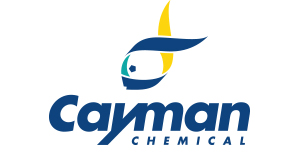Retinyl Acetate, CAS 127-47-9
Retinyl Acetate, CAS 127-47-9
Artikelnummer
CAY20242-5
Verpackungseinheit
5 g
Hersteller
Cayman Chemical
Verfügbarkeit:
wird geladen...
Preis wird geladen...
Shelf life (days): 1460.0
Formulation: A semi-solid
Formal Name: retinol acetate
Purity: ≥98%
Formula Markup: C22H32O2
Formula Weight: 328.5
CAS Number: 127-47-9
Notes: Retinyl acetate is a natural form of vitamin A (Item No. 20241).{51437} It inhibits ascorbic acid- or ferrous sulfate-induced increases in malondialdehyde (MDA) levels in rat brain mitochondria when used at a concentration of 100 µM.{51438} Retinyl acetate binds to retinol-binding protein (Kd = 220 nM for the human protein) and inhibits organic anion transporting polypeptide 1B1 (OATP1B1) and OATP1B3 in CHO cells expressing the human transporters (Kis = 1.22 and 3.89, respectively).{51439,48817} It inhibits the formation of mammary adenocarcinomas induced by the polycyclic aromatic hydrocarbon 7,12-dimethylbenz[a]anthracene (DMBA; Item No. 30383) in rats when administered at a dose of 2.5 mg/animal.{51441} Retinyl acetate (352 µmol/kg) is teratogenic to rat fetuses when administered to pregnant dams.{51440} Formulations containing retinyl acetate have been used as skin-conditioning agents in cosmetics.
Formulation: A semi-solid
Formal Name: retinol acetate
Purity: ≥98%
Formula Markup: C22H32O2
Formula Weight: 328.5
CAS Number: 127-47-9
Notes: Retinyl acetate is a natural form of vitamin A (Item No. 20241).{51437} It inhibits ascorbic acid- or ferrous sulfate-induced increases in malondialdehyde (MDA) levels in rat brain mitochondria when used at a concentration of 100 µM.{51438} Retinyl acetate binds to retinol-binding protein (Kd = 220 nM for the human protein) and inhibits organic anion transporting polypeptide 1B1 (OATP1B1) and OATP1B3 in CHO cells expressing the human transporters (Kis = 1.22 and 3.89, respectively).{51439,48817} It inhibits the formation of mammary adenocarcinomas induced by the polycyclic aromatic hydrocarbon 7,12-dimethylbenz[a]anthracene (DMBA; Item No. 30383) in rats when administered at a dose of 2.5 mg/animal.{51441} Retinyl acetate (352 µmol/kg) is teratogenic to rat fetuses when administered to pregnant dams.{51440} Formulations containing retinyl acetate have been used as skin-conditioning agents in cosmetics.

 English
English










